Third Department
Department of Psychosocial Rehabilitation to persons dependent on psychoactive substances offers a long-term inpatient program within four months.

Who is it for?
It is intended for patients who have successfully completed a detoxification program, as the main criteria for inclusion in the therapeutic process is complete abstinence from use within at least two weeks.
.

A team
The ward team includes medical staff (doctors and nurses), psychologists, a music therapist and a social worker.
The therapeutic process is entirely in a group format and includes the following main areas of change:
behavioral modification
emotional growth
bio-medical care
intellectual development
About the therapeutic model
The ideas on which the therapeutic model in the ward is based are related to the fact that the group is both a context and a method of change. The continuous and intensive 24-hour therapeutic environment reflects the patients' overall personal change.

We at the Department of Psychosocial Rehabilitation of Addicted Persons believe in the following:
-
The use and addiction to psychoactive substances is only a symptom, the real problem is dysfunctional behavior,
-
Addicts' behavior can be changed
-
Change can only happen in a certain group environment that has clearly defined group norms, rules, sanctions that support and deter certain behaviors
-
The main vehicle for behavioral change is the group
- The ability to engage in responsibilities is formed and confirmed gradually, parallel to the increase in the complexity of the tasks.
The main elements characterizing the therapeutic model applied in the ward are daily routine, hierarchical structure, group activities, clearly defined stages with specific goals. The positive influence of the group, social learning through interpersonal interaction, and the therapeutic influence of all activities are essential means of behavioral and personality change.